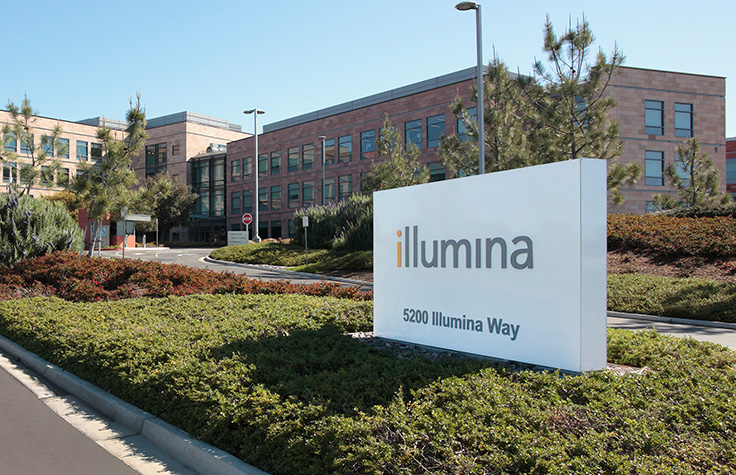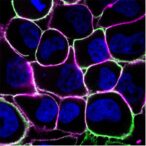Illumina and next-gen sequencing (NGS) are synonymous. But to anyone paying attention, the company’s recent emphasis on multiomics has been hard to miss. Indeed, the company has launched both proteomics and single-cell applications over the past few months. Despite that, one ‘ome has been conspicuously missing from their portfolio: spatial transcriptomics.
But now, Illumina has closed that loop. Just a few days before the biggest genomics conference of the year, Advances in Genome Biology and Technology (AGBT), Illumina has announced a new spatial technology program.
Why now? “There has been great progress in spatial,” noted Joel Fellis, PhD, vice president, product management of sequencing platforms at Illumina, “but we have put a lot of investment in R&D and we think that we can accelerate what is possible.”
The company has been working on spatial technology, and exploring options, for several years, Darren Segale, PhD, senior director of scientific research at Illumina, told GEN. “We have been experimenting and evaluating the market. But over the last year, or year and half, we have accelerated it.”
The product will be a kit, which will be distributed with slides, substrates, reagents, and a consumable holder. Users will go through a chemistry workflow to permeabilize, hybridize, and make a cDNA library that will be fully compatible with illumina sequencers—both NovaSeq and NextSeq. There are also H&E staining capabilities, which some users consider valuable information for proper cell segmentation.
The company is launching two different flavors of the kit that vary in capture area size: offering mid-to-high throughput options, depending on how much tissue is placed on the slide and the type of tissue. The number of reads per sample will depend on how many samples are loaded on the substrate: a user could load two, three, or four samples per substrate, or sequence a single sample more deeply. Segale estimates that, typically, they see 30,000 unique transcripts per sample. But they have achieved up to 40,000. For resolution, the features are roughly a micron.
Early feedback
It is very early days for Illumina’s spatial technology, with a lot of unknowns. But two early users gave GEN a glimpse into the data quality. Neither researcher has handled the kit in-house: they sent slides to Illumina for processing and received data from the company.
From a data perspective, “we were able to capture transcripts that had alluded us using other assays,” commented Jasmine Plummer, PhD, director of the Center for Spatial OMICs at St. Jude Children’s Research Hospital. “From our dataset, there is a high sensitivity and very high number of features captured for a challenging tissue type,” she added.
Another early user, Nick Banovich, PhD, associate professor and director, Bioinnovation and Genome Sciences Division and director, Center for Spatial Multi-Omics (COSMO) at TGen in Phoenix, described two standout features to GEN: a big capture area, which allows users to profile much more tissue in one experiment and high sensitivity. For example, he noted, “If we’re talking about one cell, there are quite a few genes where there is good dynamic range.” Banovich sent two slides and received data from a million cells.
Segale attributes the high sensitivity to two qualities: polyA capture which can capture many transcripts and advanced surface technologies.
But spatial has been around for years, with established, NGS-based, spatial assays such as STOmics Stereo-Seq and 10X Genomics Visium. Why is Illumina only entering the field now? “Spatial is interesting,” noted Fellis, “and has been around for a while but is not as mature as single cell. There is still a lot of evaluation going on and customers are often having to make painful tradeoffs between resolution or breadth of coverage.”
Illumina thinks that its combination of breadth of coverage and high resolution is unique and will lead to broad adoption. Early access starts later this year with a full commercial launch expected in 2026.
One unknown is how much the kit will cost. Fellis asserted that there will likely be a 2–4x reduction in price in unit area (he’s referring to the spatial prep only: this does not include the sequencing cost based on the experiment).
In coordination with Illumina’s announcement of the spatial technology, it is also pairing it with a new software platform, Illumina Connected Multiomics (ICM). ICM is a cloud-based multimodal analysis platform that enables researchers to explore and analyze multiomic data sets, such as genomic, proteomic, spatial, epigenetic, single cell, and more.
Why did Illumina announce its spatial technology before the genomics community descends on Marco Island for AGBT next week? They wanted to drive excitement before people were on the ground in Florida, Fellis said. Appropriately, Samantha Beal, Illumina’s associate director, public relations, added: “We wanted to give this its own moment in the sun.”



